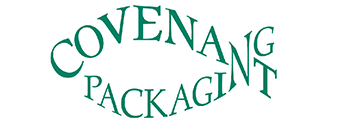How to measure a box is one of the most common questions we receive. Surprising as it may be, many people have trouble getting it just right. As Kansas City’s partner in custom packaging, correct measurements are key to maximizing the many benefits that custom has to offer such as reduced freight costs, more more efficient storage and better protection for your product.
It can be a confusing process. Considerations such as whether to include the flap and if the inside or outside of the box is most accurate can leave your head spinning. However, these measurements are also critical to the shipping decisions you make as a business owner. Freight companies factor in package weight and volume when calculating how much it can transport as well as the cost to do so. Knowing your own numbers from the start will not only expedite the process…but help keep costs low.
If you have ever asked yourself the correct way to measure, keep reading. We’ve got the answers your need.
Step 1: Measure Length
Before you can take your first measurement, you will want to grab a reliable tape measure or ruler, some paper, something the write with and the box you will be measuring. Now you’re ready to get started.
When you measure a box, it’s important to always start with length. This will be the longest side that has a flap. When purchasing boxes for your business, it is important to collect dimensions from the inside of the box. Proper sizing ensures your products fit snugly within the container to minimize shifting – and change of damage – during shipping.
Step 2: Measure Width
After you have recorded the length, turn your box 90 degrees.
You will now be able to collect the width measurement. On rectangular boxes, this is the short side box that also has a flap. Again, measure from the inside for greatest accuracy when sizing for a product packaging.
Step 3: Measure Height
When determining height, it is important to account for the standing side of the box only. Do not include flaps in any of your measurements.
To prevent them accidentally being captured, we recommend folding them back for unobstructed measuring. Then, measure from top to bottom (or bottom to top…the choice is yours!)
Industry standard is to write these as L x W x H. After they are recorded, you will have everything you need to take next steps ordering right-sized packaging for your product. Keep in mind that a variance of +/- 1/8″ is considered acceptable.
Step 4: Determine Volume
Don’t put your supplies away quite yet! Now that you have figured the perfectly sized corrugated boxes to contain your products, it may be time to prepare them for shipment or storage. In order to know exactly how many boxes a shipping company can transport or a warehouse can hold you need to know how much space filled boxes occupy.
To do this, you will need to calculate volume. Measuring for shipping (or storage) is similar to measuring for packing with on difference: this time, you measure the outside of the box. This is to properly account for the durable layers of pillowing fluting protecting your product from within.
Once again, make note of the length, width and height of the box. Then, multiply them all together. The result is the volume, stated in cubic inches (cu). For example, let’s consider a box that has 18″ length, 14″ width and 8″ height.
To figure volume: 18 x 14 x 8 = 2,016 cubic inches (cu).
Volume is a measurement we always recommend making note of it when you measure a box, even if you don’t need it immediately. Then, when the time comes to figure how many boxes fit within a space, you are already prepared with the information you need.
In Conclusion
Whether you use traditional boxes, triangular boxes or something in between, we look forward to guiding you through a process that will be as flawless as the packaging – and measurements – we provide.

